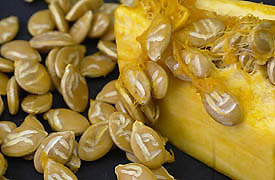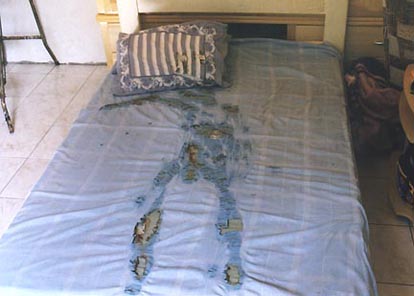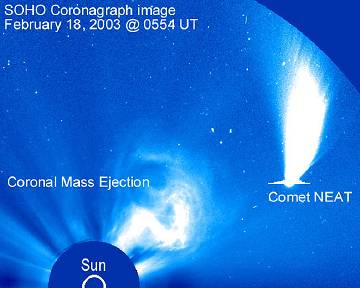Click here to subscribe and get instant access to read this report.
Click here to check your existing subscription status.
Existing members, login below:
Members only content (Real-X-Files or 120+ days)
Click here to subscribe and get instant access to read this report.
Click here to check your existing subscription status.
Existing members, login below:

March 15, 2003 Salt Lake City, Utah - Late last night, I received an email from an Earthfiles viewer concerning a restaurant in Salt Lake City, Utah, that yesterday discovered seeds inside a yellow squash that were engraved with letters and symbols. One evident pattern in a photograph taken by Ryan Galbraith from The Salt Lake Tribune, shows in the lower left corner the mathematical symbol Pi (appx. 3.14159) which represents the ratio of the circumference to the diameter of a circle and appears as a constant in a wide range of mathematical problems.
Click here to subscribe and get instant access to read this report.
Click here to check your existing subscription status.
Existing members, login below:

March 15, 2003 Grass Lake, Michigan - Biophysicist W. C. Levengood has been examining both normal control and body pattern samples I collected from the cotton and polyester woven bed sheet in Urandir Oliveira's home in February. The body pattern was discovered by several people at Oliveira's farm around 8 p.m. on September 15, 2002. (See previous Earthfiles reports about Corguinho, Brazil.)
This week I received photomicrographs from Levengood taken at 40X magnification under his microscope and today we discussed the images shown below with his comments.
Click here to subscribe and get instant access to read this report.
Click here to check your existing subscription status.
Existing members, login below:
Click here to subscribe and get instant access to read this report.
Click here to check your existing subscription status.
Existing members, login below:
Click here to subscribe and get instant access to read this report.
Click here to check your existing subscription status.
Existing members, login below:
"I believe this is the first time we have observed a coronal mass ejection (from the sun) apparently interacting with a comet."
- Gareth Lawrence, Ph.D., Goddard Space Flight Center

March 7, 2003 Greenbelt, Maryland - Comet NEAT was named after the "Near-Earth Asteroid Tracking System" based at the Jet Propulsion System in Pasadena, California. NEAT's job is to monitor the solar system for comets and asteroids that might be on a collision course with Earth and warn about size and nearest approach date. The comet was not discovered by the NEAT system until November 6, 2002. When it was first seen, it was extremely faint to even the most sensitive ground-based observatories. But as it moved in its orbit toward the sun, it began to brighten intensely as gas and dust cooked off the comet and deflected sunlight back towards the Earth. The comet brightened so much faster than predicted that some scientists were worried nothing would be left. At its closest to the Earth on December 24, 2002, it was .8 of an Astronomical Unit from our planet, or about 74 million miles.
Click here to subscribe and get instant access to read this report.
Click here to check your existing subscription status.
Existing members, login below:
Click here to subscribe and get instant access to read this report.
Click here to check your existing subscription status.
Existing members, login below:
March 3, 2003 Littleton, Colorado - This morning Cherlette LeFevre of the Seattle UFO/Paranormal Group told me that the SUPG board of directors voted to "dis-invite" me from being the long-scheduled evening speaker on the first night of their May 2003 Seattle conference, "because of the controversial nature of the Brazil case." (See Earthfiles February and March 2003 reports about Corguinho, Brazil.) Cherlette emphasized that MUFON members had been e-mailing her group to protest a presentation of the Urandir Oliveira "hoax," as branded by Brazil MUFON Director and publisher of Brazilian UFO Magazine, Ademar Jose Gevaerd, known as A. J.
Click here to subscribe and get instant access to read this report.
Click here to check your existing subscription status.
Existing members, login below:
Click here to subscribe and get instant access to read this report.
Click here to check your existing subscription status.
Existing members, login below:
Click here to subscribe and get instant access to read this report.
Click here to check your existing subscription status.
Existing members, login below:

